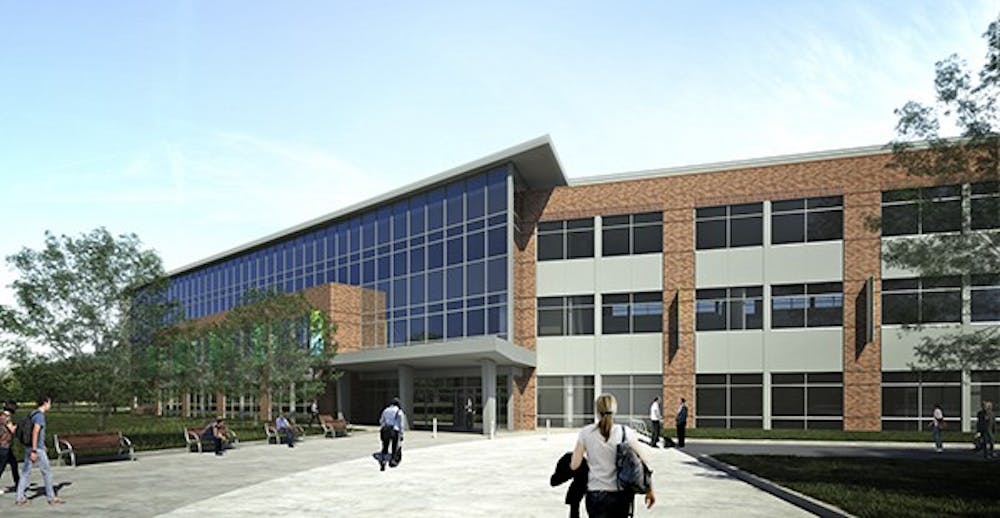By 2015, Ohio University will have more than a just medical school in Dublin.
Ohio University’s College of Health Sciences and Professions will serve as a neighbor to OU’s Heritage College of Osteopathic Medicine on the 15 acres the university purchased in 2012 at 7001-03 Post Rd. in Dublin, a Columbus suburb.
The Daimler Group will begin developing the site, to be known as the Dublin Integrated Education Facility, after the groundbreaking ceremony held this week.
The first phase of the project, which will include construction of the building and development of the first two floors for the College of Health Sciences and Professions’ masters of physician assistant program, is estimated to cost $14 million, said Donna Goss, director of engagement and real estate management, in an email.
The College of Health Sciences will occupy the first and second floors of the Integrated Education Facility, which will be shared with Columbus State Community College and other Ohio colleges that OU is still working on contracting, said Randy Leite, dean of the College of Health Sciences and Professions.
“(OU-HCOM) will certainly be on that campus, so we’ve talked about how we can connect the medical program with the physician assistant program,” Leite said.
OU-HCOM will open in July 2014, according to a previous Post report.
The College of Health Sciences and Professions and the OU-HCOM building will be part of a greater plan of economic cooperation between OU and the city of Dublin, Goss said.
“The Economic Development Agreement between the University and the City of Dublin calls for the completion of a master planning study by 2018,” Goss said in an email.
Students of both OU colleges will share the auditorium space in the College of Health Sciences and Professions’ building, said Averell Overby, project leader of the Health Sciences and Professions’ Dublin program and chair of the department of Interdisciplinary Health Studies.
The College of Health Sciences wanted to establish a branch in Dublin to offer services to urban, underserved areas rather than rural, underserved areas, Overby said.
“What the site offers and the reason we selected to have a program there, is the vast clinical resources,” Overby said. “It’s not that we don’t have O’Bleness here. It’s just that we’re limited in what students can do.”
Students in Dublin will be able to have clinical rotations with OhioHealth and other medical facilities, Leite said.
The building will open in May 2015 and include two 60-person classrooms, a skills lab with training simulators for clinical practice, a wet lab for microbiology, eight patient exam rooms, a lounge and a library on the first floor, Overby said.
The second floor will be used as a flexible space that can hold 200 people or be broken down, with several breakout or seminar rooms surrounding the main space, Overby said.
Once construction is complete, the physician assistant program will admit a class of 45 students, specifically recruited from the Cleveland, Columbus and Appalachian regions in order to target those from regions especially low in primary care physicians, Overby said.
“The primary purpose of the program is to produce primary care physician assistants because it is primary care that has the most need in the future,” Overby said.
dk123111@ohiou.edu
@DanielleRose84






